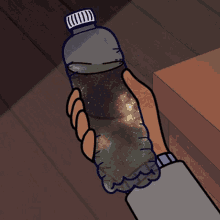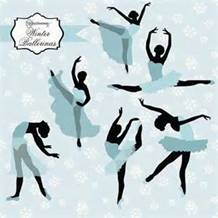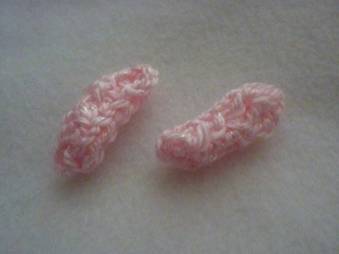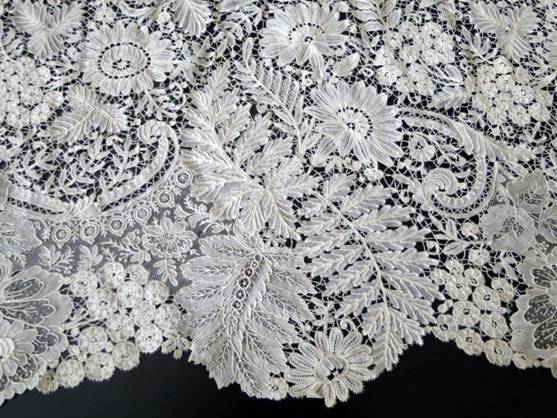
Salty Sam’s Fun Blog for Children
Number 217
Tulip Mania
Hello Everyone

Everyone has their favourite spring flower.
lt might be the daffodil because they are such a cheerful sight in very early spring, or it might be tulips because they come in so many different colours.
Tulips look especially nice if you under-plant them with with forget-me-nots and wall flowers.
ln fact, tulips probably have the biggest variety of shape, size and colour of any flower that comes from a bulb.
At one time, the flat lands of Norfolk and Lincolnshire in the east of England were covered in thousands of acres of tulip fields. There was colour as far as the eye could see.
The town of Spalding had a very famous parade every year when many floats would be covered in colourful tulip heads. These flowers were cut off so that all the strength of the plants would go into the bulbs. lf the flower heads are not taken to use for another purpose they are left to rot on the ground to put nutrients back into the soil.
The British tulip has almost vanished over the last fifty years of so – and so has the Spalding Flower Parade.
Luckily, a new Springfields Festival hopes to carry on the tradition.
And tulips have quite an interesting history so l thought l would tell you about it in my blog post this week…
Some were brought here by the Romans like so many other things. But on the whole at that time they were left to grow wild in the grass.
When laying out gardens around houses became popular in the 1600s, plants became more a thing of decoration than ever before. Up until that time, the plants cultivated near to houses were used mainly for medicinal purposes. That means people used them to make home-made medicines. Although these plants could also be used to flavour dishes or even make soap or fly repellents too.
Then about 400 years ago something very strange happened.
lt was a phenomenon that would shake a whole economy.
lt was called Tulip Mania.
lt happened in Holland and plunged the Dutch economy into crisis for many years to follow.
Let me tell you about what happened…
Tulips were first discovered in the Tian Shan Mountains which stretch from Turkey to China. Certain varieties came to the Netherlands in the late 16th century.
A fashion for collecting them started. They were considered a luxury item and a status symbol.
Then someone discovered what they called a ‘broken tulip’. lt was called this because it had a streaked effect on its petals. This became the most-prized type of tulip. Although it looked very pretty, the effect was caused by a plant virus that would eventually lead to the plant’s death. People did not realize this at the time though.
The rarity made the tulips affected very sought-after.
The fashion for collecting them became a craze and the price of tulips shot up to that equal to the price of a house within just one growing season between 1636 and 1637.
ln February of 1637, a single bulb could be worth about ten times the yearly salary of an ordinary working man.
People would sell everything they owned to buy tulip bulbs to sell them on for an enormous profit.
But tulip bulbs could only be dug up to change hands at only one time of year and so instead of selling the actual bulbs, promissory notes were exchanged instead.
The bulbs could be worth over £2 million pounds each in today’s money!
This practice of exchanging documents instead of goods was the start of what we call a ‘futures market’. (The futures market today is still a risky business where fortunes can be lost or made.)
But the bulbs were diseased and the crops failed. The notes were worth nothing because there were no bulbs to give anyone who owned one.
Later that same winter, the crazy scramble for buying and selling the bulbs was over. Within a few days, the price of tulip bulbs plunged to a hundredth of what they had been.
The mania collapsed as quickly as it had come and as the tulips lost their enormous worth, people lost their homes and businesses. This was probably the first example of a ‘financial bubble’ in history. lt blew up – and then burst!
The whole country’s economy collapsed. The government could not maintain its military forces and consequently the Dutch colonies could not be supported.
New Amsterdam fell into the hands of the British and became known as New York.
The Dutch still grow a lot of tulips. Today, selling cut flowers is an important part of their economy. lt is a multi-million euro industry.
Nowadays, luckily, tulip bulbs are very affordable and if you want to grow some, it is very easy.
You can plant them in pots using some multi purpose compost with some grit mixed in. The grit helps to drain water out of the pot. Tulips don’t like to be too wet. You can put a layer of grit on the top of the soil as well.
lf you want to keep your tulips from year to year, they can be dug up and stored until you need to plant them again. You can plant them around October time in pots but must wait until November to plant them in the ground.
Simply break off the dried flower head – from the base of the stalk. This is so you remove the developing seed head.
Shake off the soil and store the whole plant in a cardboard box in a dark well-ventilated place like a cupboard or a shed. Make sure that the tulips have space between them.
After a couple of months take off the dried up leaves and stalks and store the bulbs in something like a fabric potato sack.
They should not get damp.
Some people like to buy new tulip bulbs every year because not all will last from season to season and they want to make sure that they have plenty of flowers in their garden once spring comes.
lf you have a big enough garden, you can plant the ones that have flowered once in a patch of grass and any that do continue to come up will look as though they have been put into a meadow setting.
lf you pick tulips to put in the house, take off the lower leaves before you put them in a vase. Don’t put water right up to the top of the vase, but top the water level up every day.
Some people say that pricking a hole through the stem just below the flower head using a large pin will help cut tulips last longer. Some people put a little bit of sugar in the water as well.
You could try an experiment to see which methods work the best.
Let me know how you get on.
Bye bye everyone – don’t forget to subscribe to my blog!
lf you like my blog, please support it by telling all your friends and followers about it.
Thank you!
And see you again next Fun Friday!
Love and kisses
Salty Sam

www.christina-sinclair.com

![]()
Bill and Bob’s Joke of the Week![]()
![]()
Bill: What flowers grow under your nose?
Bob: l don’t know. What flowers grow under your nose?
Bill: Tulips!

Salty Sam © Christina Sinclair 2015
Unauthorized use and/or duplication of material from this blog without express and written permission from this blog’s author and owner is strictly prohibited.
Links may be used to www.christina-sinclair.com

Picture Gallery
 A flower head float
A flower head float
 Tian Shan Mountains from space – this is the northwest corner of China
Tian Shan Mountains from space – this is the northwest corner of China
 Tulip breaking virus
Tulip breaking virus
(directtransmission.org)
 Detail from Jan Brueghel the Younger’s Satire on Tulip Mania, 1640
Detail from Jan Brueghel the Younger’s Satire on Tulip Mania, 1640
(The painter is painting the people as monkeys to make fun of them)
 Tulips and under-planting
Tulips and under-planting
![]()

 THE SALTY SAM NEWS DESK
THE SALTY SAM NEWS DESK

My Auntie Alice is always trying to find new plants for her garden that are particularly pretty or unusual. She especially likes plants that will astound and amaze the children.
Last year, she planted some bulbs of a kind of tulip that she had never planted before. It was called Ice Cream.
This tulip has a very unusual flower. There are dark pink petals around the outside and a hump of white petals in the middle. The whole effect looks like an ice cream cone!
She has many other pretty tulips planted around her cottage too and her garden is a riot of colour at this time of year.
Her new tulips may be called ice cream – but of course they are not to be eaten!

And as the spring flowers come out, the tourists start showing up in Rocky Bay too.
Captain Jack has been working hard on the boat he bought to make it look lovely.
Do you remember I told you about it earlier in the year?
It is gleaming with new varnish and paint and he plans to start taking paying customers on a trip around the bay very soon now.
The children desperately wanted to help, so he gave them bits of painting to do.
They wore old shirts that Bill and Bob’s dad gave them to protect their clothes, and Captain Jack put lots of newspaper down in case they sprayed or dripped paint in the wrong places.
Then Captain Jack wrote down all the things he knew about the town and the wildlife you might see in the area – like a kind of script for himself so that he could tell his passengers all sorts of interesting facts as they travelled around the bay.
When he thought he was ready, he made a practice run with Auntie Alice and the children on board.
They were his ‘focus group’.
They gave him ‘feedback’.
In other words, they were pretending to be customers and they told him what they thought of his new ‘business product’.
He took their comments on board. (There is a pun there!)
I stood at the top of my lighthouse waiting to wave to them when they chugged by in the boat.
Tomorrow, we are going to have a proper launching ceremony.

The notice telling people where to wait will go up on the quayside and Auntie Alice will launch the business officially by pouring some fizzy lemonade over the bow of the boat.
We don’t want broken bottle glass in the water, do we?
I will have to remember to go outside to wave when the boat comes by over the summer season.
My lighthouse and I will be an important attraction on the journey!

*********************
TO ADVERTISE ON THIS BLOG
PLEASE CONTACT:
christina.sinclair.ads@aol.co.uk
*********************


Quick Quiz
There is a very, very old song called ‘Tulips from Amsterdam’. And there are a lot of tulips grown in Holland.
And Port is a sweet, red wine that comes from the north of Portugal.
What do you associate with these places – and where are they?
- Seville
- Brazil
- Lourdes
- Naples
- Brussels



![]()
lt’s the Weekend!

HOW TO MAKE A BALLET DRESS FOR A 12” DOLL
This skirt can be worn long or tucked up to become a short skirt.
There will be another outfit next week for your doll to wear for practice.
If you want to get to be good at ballet or playing a musical instrument you have to practise a lot.

BALLET DRESS TOP (KNIT ONE)
Using 4mm knitting needles and white dk yarn cast on 24 stitches
Knit 4 rows of garter stitch
Knit 10 rows of stocking stitch
Purl 1 row
Purl 1 row
Cast off
TO MAKE UP
Sew up the back seam using over-sew stitching with right sides together
BALLET SKIRT (KNIT ONE)
Using 4mm knitting needles and white dk yarn cast on 40 stitches
Knit 32 rows of garter stitch
Cast off
TO MAKE UP
- Sew up back seam using over-sew stitching with right sides together
- Crochet 70 chains into a length of white yarn and thread this cord around the skirt waist through the centre of the garter stitching rows
- Dress the doll with the bodice and then slip the skirt over the top

BALLET SHOES (KNIT TWO)
Using 4mm knitting needles and pink dk yarn cast on 7 stitches
Knit 8 rows of stocking stitch
Cast off leaving a length of yarn for sewing up shoes
TO MAKE UP
- Weave a length of yarn along the casting off row using a knitter’s needle
- Pull the yarn in tightly to create a toe for the shoe and take the sewing up along the top of the shoe leaving enough space for the doll to put her foot in the shoe which will be a gap of about 1cm
- Use the cast on row for the back of the shoe and sew up the back seam
- Turn the shoe the right way out

Please note that the material on this blog is for personal use and for use in classrooms only.
It is a copyright infringement and, therefore, illegal under international law to sell items made with these patterns.
Use of the toys and projects is at your own risk.
©Christina Sinclair Designs 2015
![]()

Quick Quiz Answers
- Seville – oranges to make marmalade – Seville is a city in Spain
- Brazil nuts from the rainforest – Brazil is a country in South America
- Lourdes – miracles – it is a town in France where pilgrims visit (especially when they are ill) after an apparition of the Virgin Mary was reportedly seen in 1858
- Naples – Neapolitan ice cream – strawberry, vanilla and chocolate ice cream put side by side in one block
- Brussels – lace

Brussels lace


